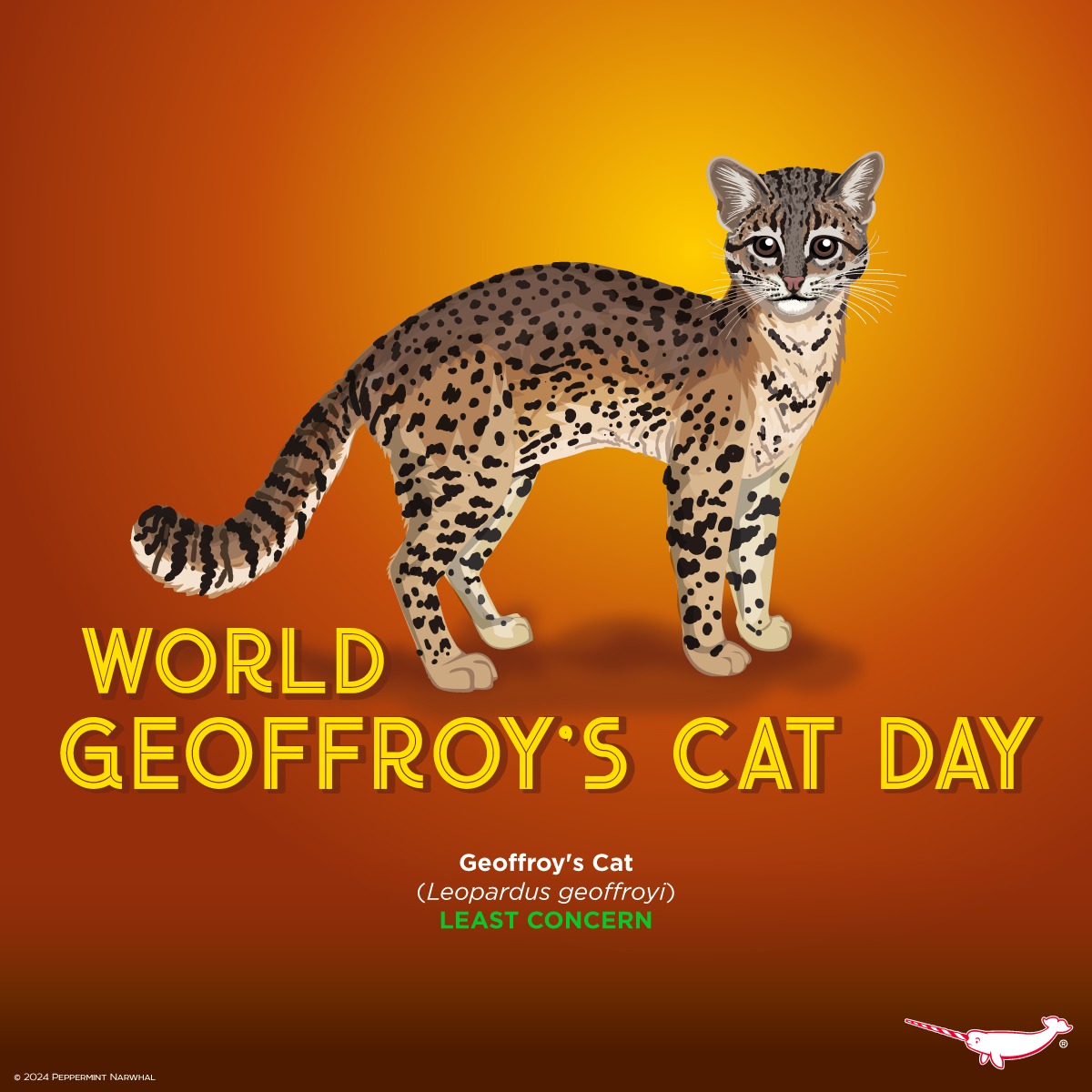– Understanding the Geoffroy’s Cat and its significance in the ecosystem
– The threats facing Geoffroy’s Cat and the efforts to conserve them
– Celebrating Happy World Geoffroy’s Cat Day and its importance in raising awareness
Geoffroy’s Cat (Leopardus geoffroyi) is a compelling subject of study within zoology and conservation due to its distinct place in South America’s ecosystems. A concise examination of its habitat preferences, dietary breadth, and solitary nature provides a foundational understanding of its ecological role. Additionally, identifying the challenges this species confronts and reviewing the conservation strategies aimed at its preservation reveals the multi-faceted approach required to ensure its long-term survival. Recognizing Happy World Geoffroy’s Cat Day not only celebrates this species but also plays a critical role in educating the public about the importance of wildlife conservation.
Focusing first on the natural history and ecology of the Geoffroy’s Cat, this small felid exhibits remarkable adaptability. It thrives across various South American habitats, evidencing its resilience and ecological versatility. This adaptability supports a diverse diet ranging from fish and amphibians to small mammals, indicating Geoffroy’s Cat’s integral role in maintaining the balance within its ecosystem. Its solitariness outside the breeding season underscores a largely unseen life, contributing to the mystique surrounding this species and highlighting the importance of focused research to fully understand its behaviors and needs.
The primary threats to Geoffroy’s Cat are habitat loss and fragmentation, poaching for its attractive fur, and the illegal pet trade. These challenges are not unique in wildlife conservation but require specific, targeted efforts to mitigate their impact on this species. Efforts to conserve Geoffroy’s Cat involve habitat protection and restoration, legal protections, and community-based conservation initiatives to reduce poaching and illegal trade. Moreover, scientific research is pivotal in informing these strategies, offering insights into the species’ population dynamics, genetic diversity, and ecological requirements.
Happy World Geoffroy’s Cat Day is pivotal in this conservation tapestry. This commemoration acts as a beacon, rallying public support and increasing awareness about Geoffroy’s Cat and the broader conservation issues it embodies. The day offers an opportunity to celebrate the progress made in conserving this species while spotlighting the ongoing challenges and the work still required. It engages a global audience, fostering a connection to this small but significant species and emphasizing the shared responsibility to protect our planet’s biodiversity.
Geoffroy’s Cat embodies the intricacies of wildlife conservation, showcasing the challenges and triumphs encountered in preserving our natural world. The multidimensional approach to its conservation, encompassing habitat protection, legal frameworks, community engagement, and scientific research, underscores the complexity of conserving biodiversity in today’s changing environment. Celebrating Happy World Geoffroy’s Cat Day amplifies the importance of this species, drawing attention to the broader narrative of conservation and the enduring need for informed, passionate engagement in safeguarding our natural heritage. Through such celebrations, awareness grows, fostering a deeper understanding and appreciation of the natural world, which is crucial for the continued survival of species like Geoffroy’s Cat and the countless others that share our planet.
*****
Source Description
Happy World Geoffroy’s Cat Day!
The Geoffroy’s Cat (Leopardus geoffroyi) is one of the smallest members of the Felidae family. It is one of the most widespread felids in South America. It lives in many habitats, including woodlands, arid scrublands, pampas grasslands and wetlands, especially those that provide decent to heavy cover. It feeds on a wide range of prey, including fish, amphibians, reptiles, birds, and small mammals. It is primarily a solitary animal, meeting up only in the breeding season. Happy World Geoffroy’s Cat Day!
–
NEW collectible enamel pin series featuring the world’s only egg-laying mammals, the monotremes, including the platypus and the echidnas.
Pledge Now! – https://rb.gy/0lw7he
Search “Monotremes” or “Peppermint Narwhal” on Kickstarter.
The campaign runs now through Feb. 4, 2024.
Shop www.peppermintnarwhal.com.
Last Chance – 2024 Calendar will sell out soon!!!


